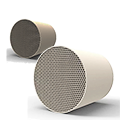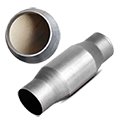Mechanism of Metal Catalysts
Adsorption of Metal Catalysts
Adsorption is a crucial step in heterogeneous catalysis. Transition metals can adsorb gases such as oxygen. Their strong chemical adsorption capacity is related to the properties of transition metals. This is because they possess vacant d orbitals or unpaired d electrons in their outermost electron shells, making them prone to forming chemical bonds with gas molecules. Their low activation energy allows them to adsorb most gases. Most importantly, their d orbitals are either half-filled or fully filled, making them relatively stable and less likely to form chemical bonds with gas molecules.
In a catalytic reaction, a metal catalyst first adsorbs one or more reactant molecules, enabling them to react chemically on the metal surface. The activity of a metal catalyst for a particular reaction is related to the relative stability of the intermediates formed after the reactants adsorb on the catalyst surface.
Generally speaking, molecules in a state of moderate chemical adsorption exhibit the greatest catalytic activity. Excessively weak adsorption prevents the chemical bonds of reactant molecules from relaxing or breaking, making them less likely to participate in the reaction. Excessively strong adsorption, on the other hand, results in the formation of stable intermediate compounds that cover the catalyst surface, hindering desorption.
2. Metal-Support Interactions
The two main factors inducing metal-support interactions are electronic interactions and chemical interactions. Different metal catalyst systems have different influences on the metal-substrate interaction, and the dominant factor depends primarily on the properties of the metal catalyst and the reaction conditions.
Electronic interactions refer to the redistribution of charge at the metal/support interface when the metal and support are in contact, maintaining minimum energy and solid potential continuity. This effect can be categorized into local charge transfer and long-range charge transfer. Local charge transfer is primarily driven by the mutual polarization of electron orbitals caused by weak van der Waals forces.
Long-range charge transfer occurs when the metal and oxide contact the interface, maintaining the Fermi level of the two phases, leading to charge transfer. At the metal-support interface, the support possesses numerous surface states, which significantly influence the formation of the barrier to free electron transfer. For example, in support-type semiconductors, if the work functions of the metal and support differ, charge transfer occurs when they come into contact.
Chemical interaction refers to the mass transfer process between the metal and support. This mass transfer process includes metal diffusion on the support surface, diffusion of metal or support atoms at the interface, and interfacial reactions (oxidation-reduction reactions, alloying, support coating, and interdiffusion).
Precious metal catalysts are highly valued for their excellent activity, selectivity, stability, and synergistic effects. They are widely used in reactions such as oxidation, reduction, hydrogenation, dehydrogenation, cracking, synthesis, isomerization, and aromatization, playing a vital role in various chemical, pharmaceutical, environmental, and new energy applications.




























